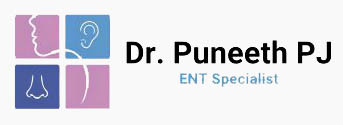The nose, often regarded as a central feature of the face, serves as far more than just a defining aesthetic. It is a remarkable organ with multifaceted functions critical to our daily lives. Beyond its role in shaping our appearance, the nose is intricately involved in two fundamental aspects of human existence: respiration and olfaction. As the primary gateway for air to enter our respiratory system, it filters, warms, and humidifies the air we breathe, safeguarding our delicate lung tissues. Simultaneously, it houses a complex array of olfactory receptors that enable us to perceive and interpret a diverse range of scents, enriching our sensory experiences and influencing our memories and emotions. Thus, the nose stands as a testament to the remarkable synergy between form and function within the human body, embodying both practical utility and aesthetic significance.

Nose

Endoscopic Nasal and Sinus Surgery
Endoscopic Nasal and Sinus Surgery is an advanced medical procedure performed by experienced specialists like Dr. Puneet. It involves using a small tube with a camera to treat various nasal and sinus conditions with minimally invasive techniques.
This surgery is suitable for individuals dealing with chronic sinusitis, nasal polyps, sinus tumors, nasal blockages, or recurring sinus infections. It addresses issues such as persistent inflammation, nasal growths, tumors, structural abnormalities, and frequent infections.

Evaluation Of Snoring
When evaluating snoring, healthcare professionals typically rely on a combination of patient history and physical examination to diagnose the underlying causes. However, in some cases, particularly when there are concerns about underlying sleep disorders, a specialized sleep study may be necessary to obtain objective findings.
The diagnostic evaluation of snoring often begins with a detailed patient history, which may include questions about the frequency and intensity of snoring, associated symptoms such as daytime fatigue or gasping for air during sleep, and any underlying medical conditions or medications that may contribute to snoring. A physical examination may also be conducted to assess the structures of the nose, mouth, and throat for any abnormalities that could contribute to snoring.
In certain situations, a specialized sleep study, known as polysomnography or a home sleep apnea test, may be recommended to monitor various parameters during sleep, such as breathing patterns, oxygen levels, and sleep stages. This can help diagnose conditions such as obstructive sleep apnea, a common disorder characterized by pauses in breathing during sleep.

Endoscopic DCR
Endoscopic Dacryocystorhinostomy (DCR) is a minimally invasive surgical technique used to address nasolacrimal duct obstruction, where tears are unable to drain properly from the eye to the nose. By employing advanced endoscopic methods, this procedure offers a highly effective and less invasive alternative to traditional DCR surgery. It aims to create a new drainage pathway for tears, restoring normal tear flow and alleviating symptoms like excessive tearing, recurrent eye infections, and discomfort.
During Endoscopic DCR, a tiny endoscope is inserted through the nostril to visualize the nasal cavity and locate the blocked nasolacrimal duct. Specialized instruments are then used to create a new opening in the nasal bone and adjacent tissues, allowing tears to bypass the obstruction and drain directly into the nasal cavity. This approach offers advantages over traditional open DCR surgery, including smaller incisions, reduced scarring, shorter recovery time, and decreased post-operative discomfort. Overall, Endoscopic DCR is a highly effective and minimally invasive treatment option for individuals with nasolacrimal duct obstruction, significantly improving their quality of life.

Rhinoplasty
Rhinoplasty, commonly known as a "nose job," is a surgical procedure aimed at reshaping or reconstructing the nose. This versatile procedure can address various concerns, including aesthetic dissatisfaction, functional impairments, or congenital defects. Whether enhancing facial harmony, improving breathing, or correcting nasal deformities, rhinoplasty offers transformative results tailored to individual needs.
During a rhinoplasty procedure, the surgeon makes precise incisions to access the nasal structures, allowing for meticulous reshaping and refinement. Depending on the desired outcome, the surgeon may adjust the nasal bones, cartilage, or soft tissues to achieve the desired shape, size, and symmetry. Whether reducing a prominent dorsal hump, refining nasal tip definition, or correcting nasal asymmetry, the surgeon employs advanced techniques to achieve natural-looking results while preserving nasal function.
Beyond aesthetic enhancements, rhinoplasty can also address functional concerns such as nasal obstruction or breathing difficulties. By optimizing nasal airflow and structural support, patients can experience improved breathing and overall nasal function post-surgery.
Recovery from rhinoplasty typically involves a period of swelling, bruising, and mild discomfort, which gradually resolves over time. While initial results may be visible shortly after surgery, final outcomes may take several months to fully manifest as swelling subsides and nasal tissues settle into their new shape.
It's crucial to consult with a board-certified plastic surgeon or facial plastic surgeon with extensive experience in rhinoplasty to ensure optimal results and patient safety. A thorough pre-operative evaluation, comprehensive discussion of goals and expectations, and personalized surgical plan are essential components of a successful rhinoplasty journey.

